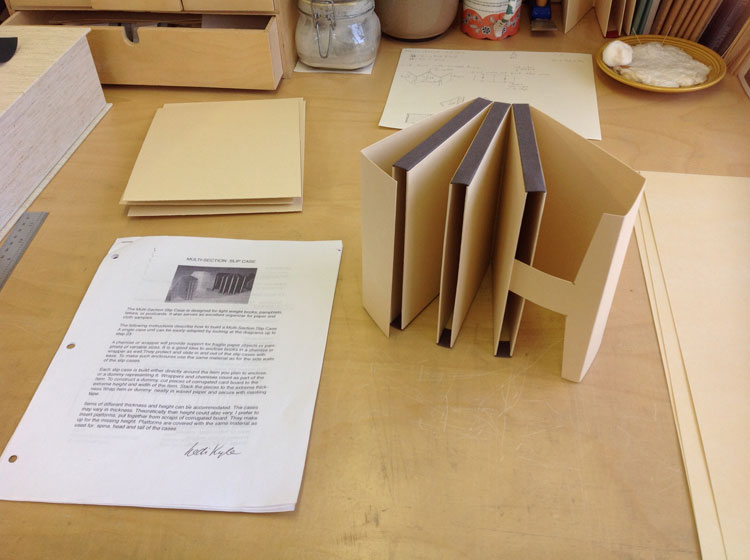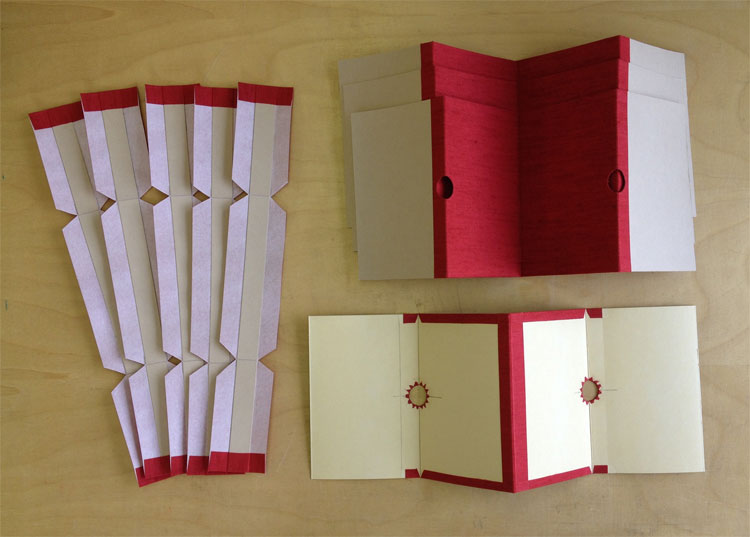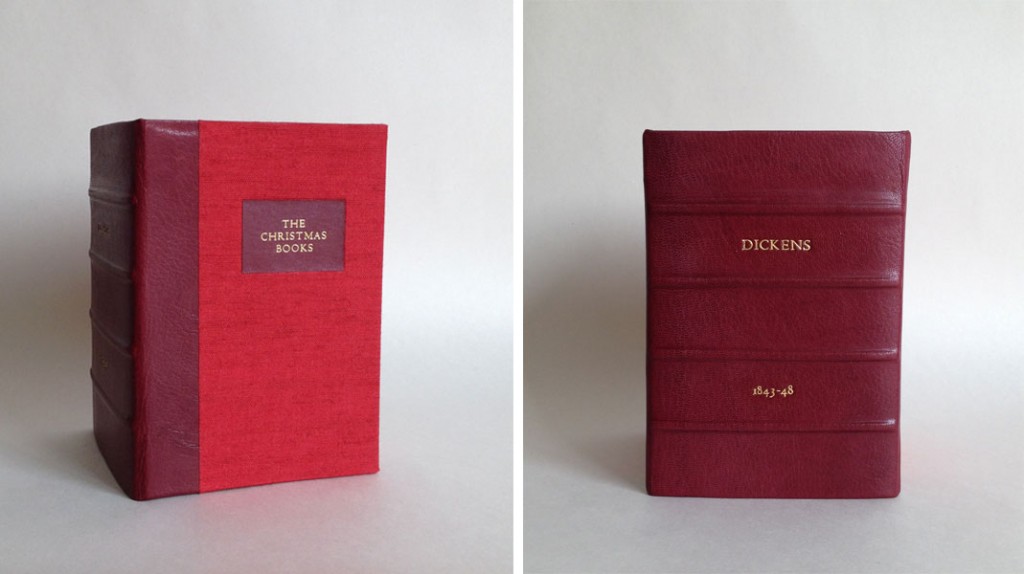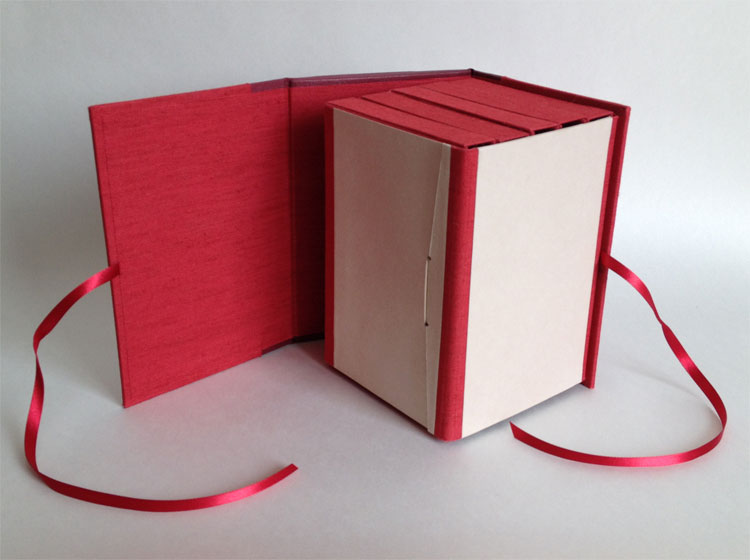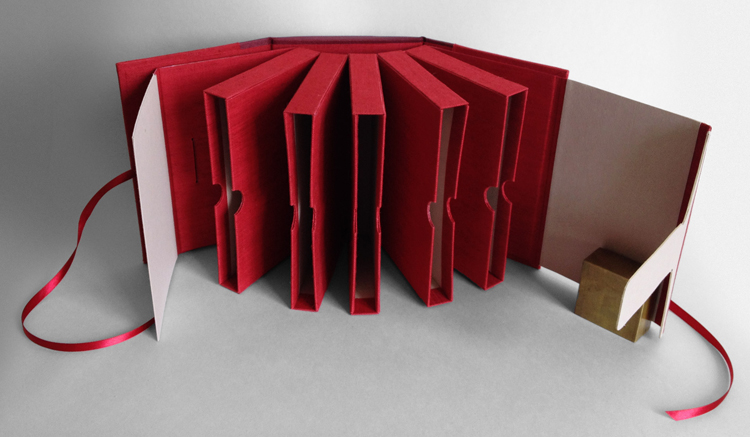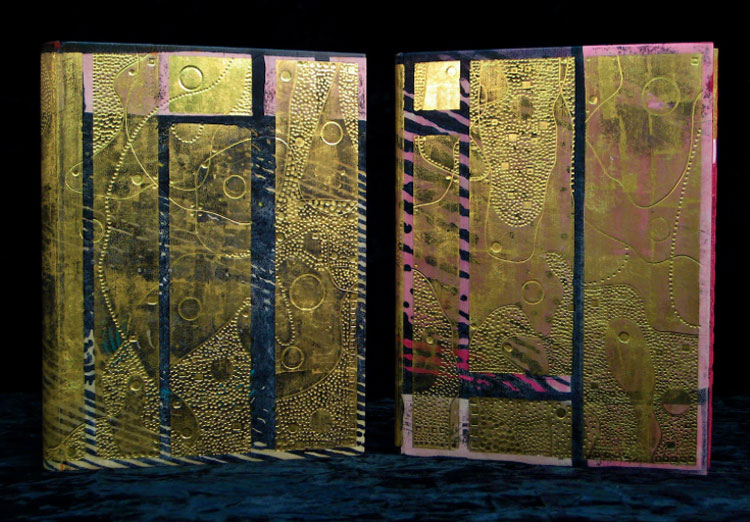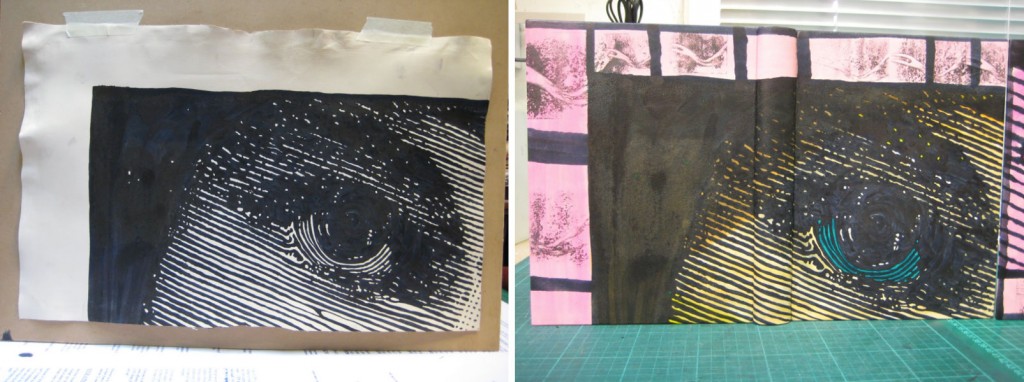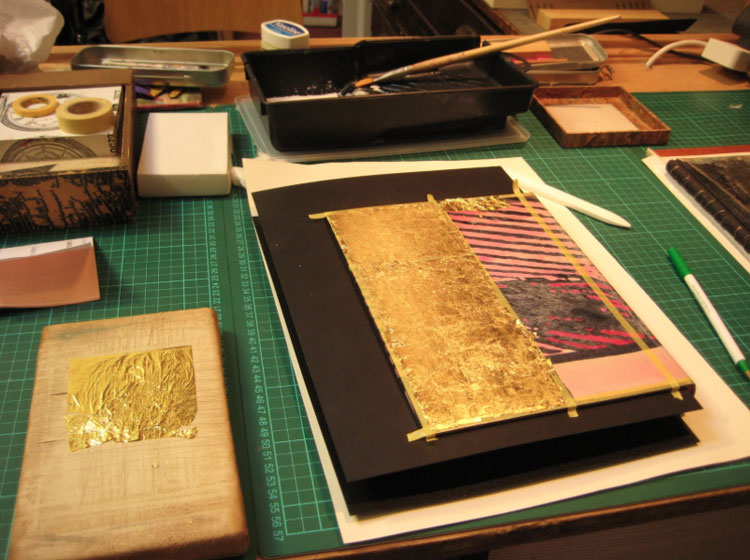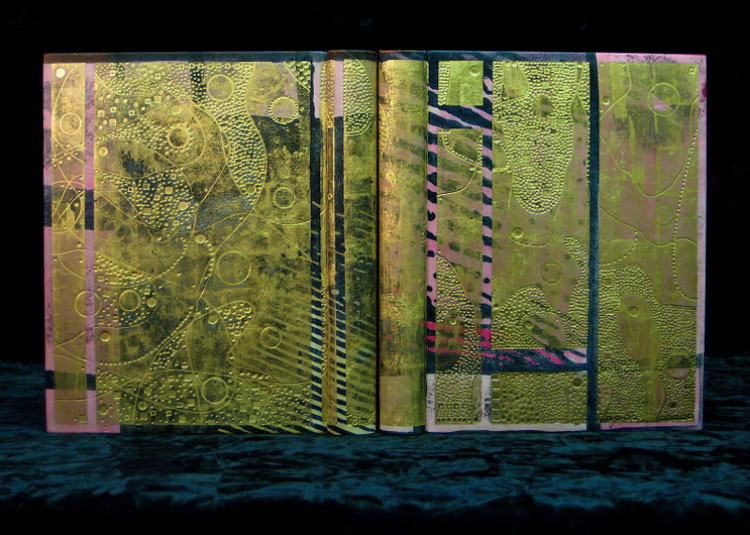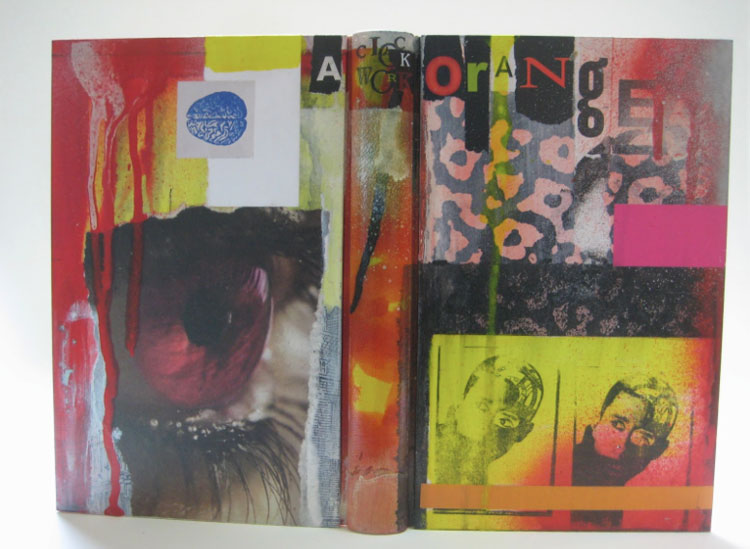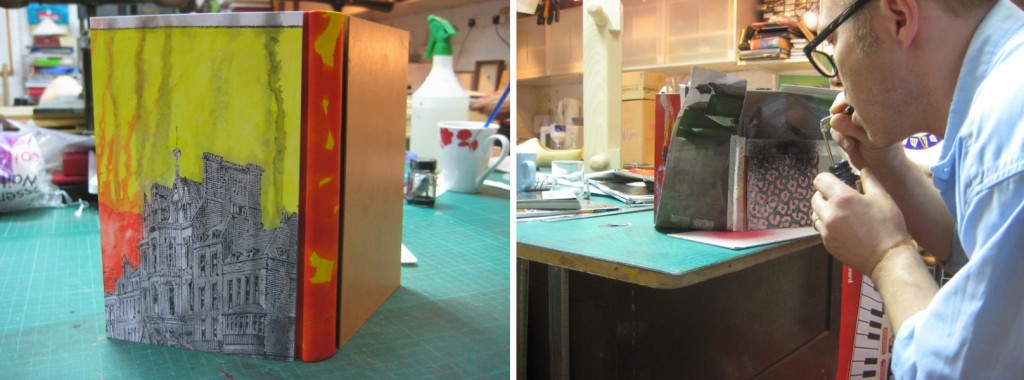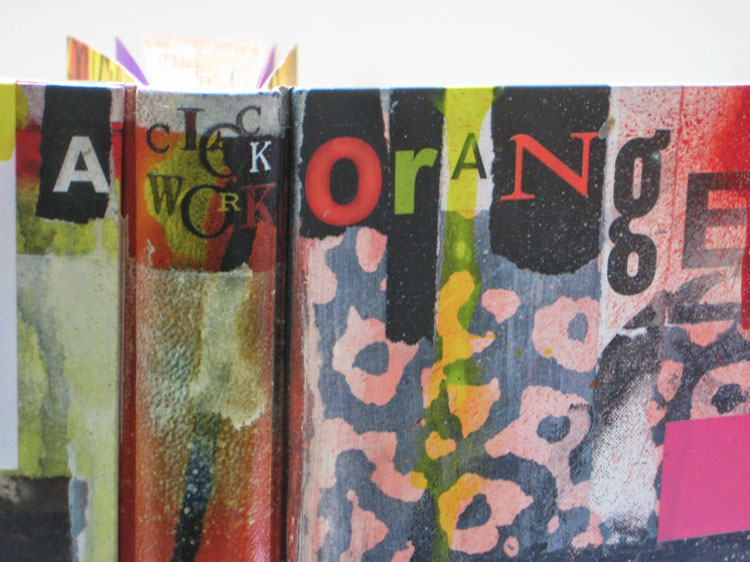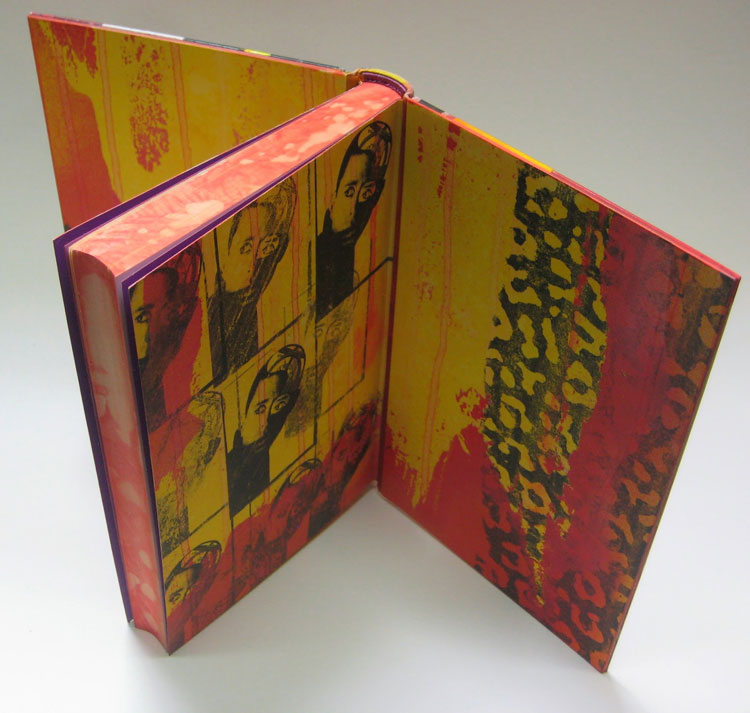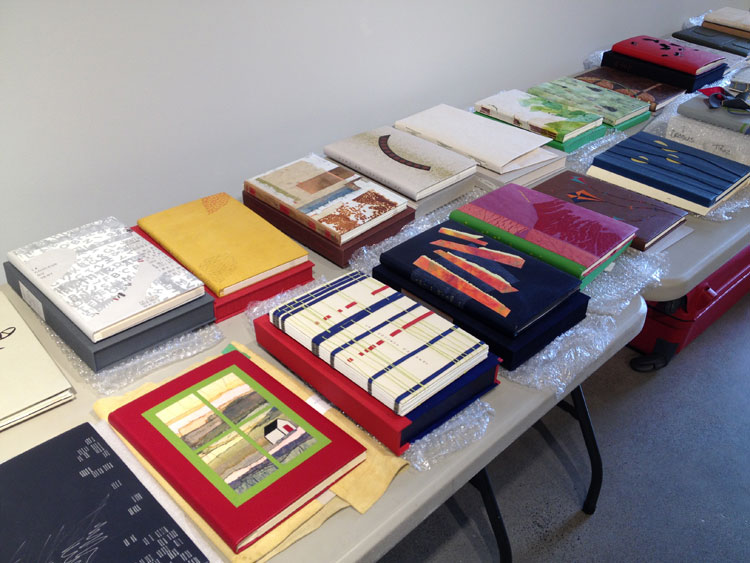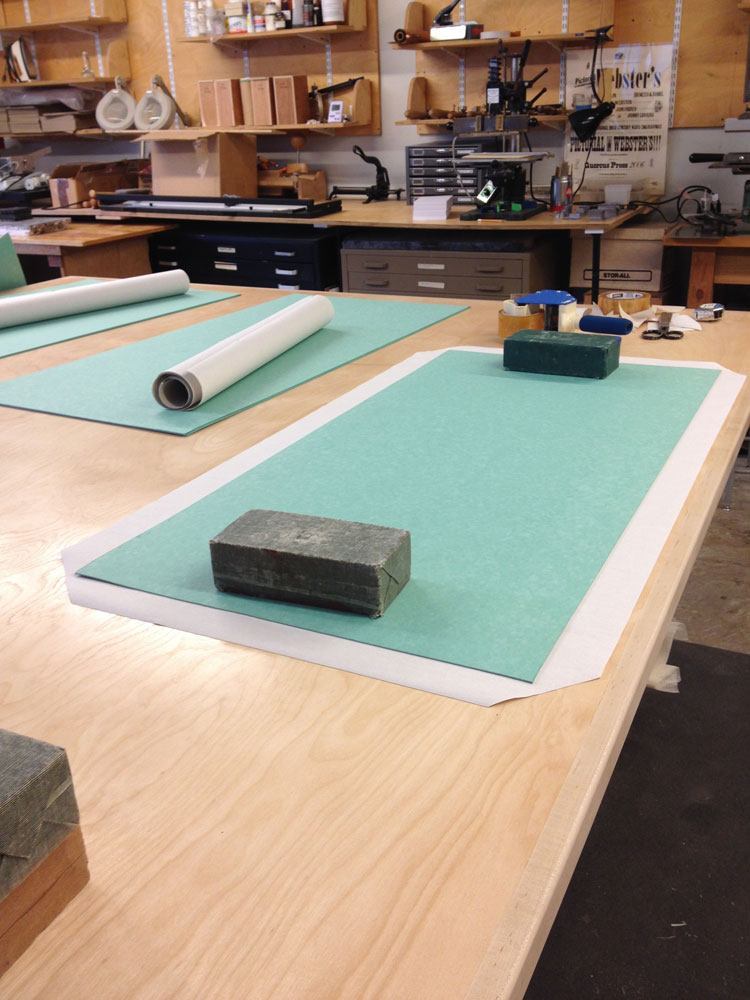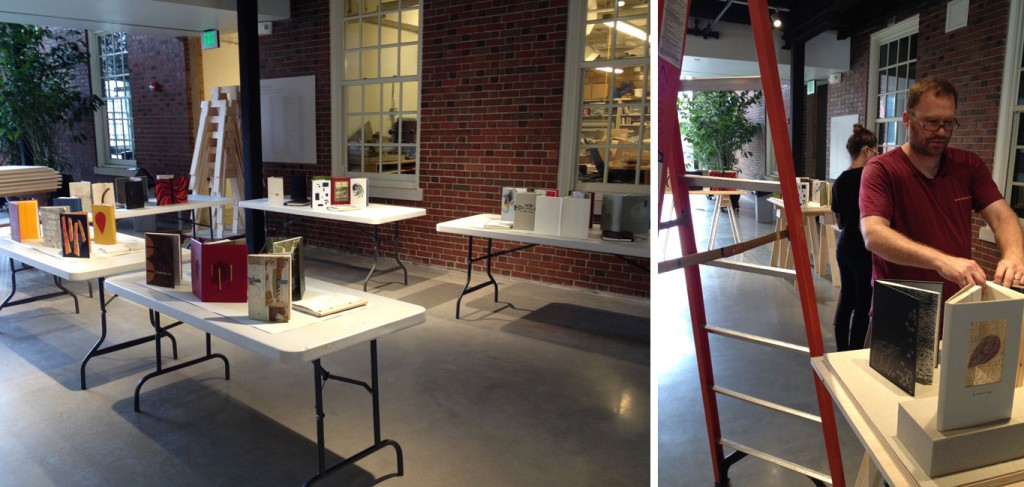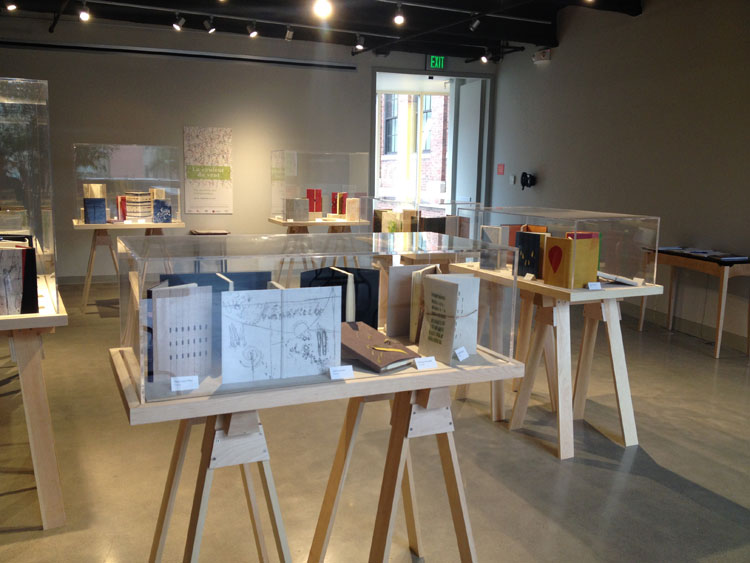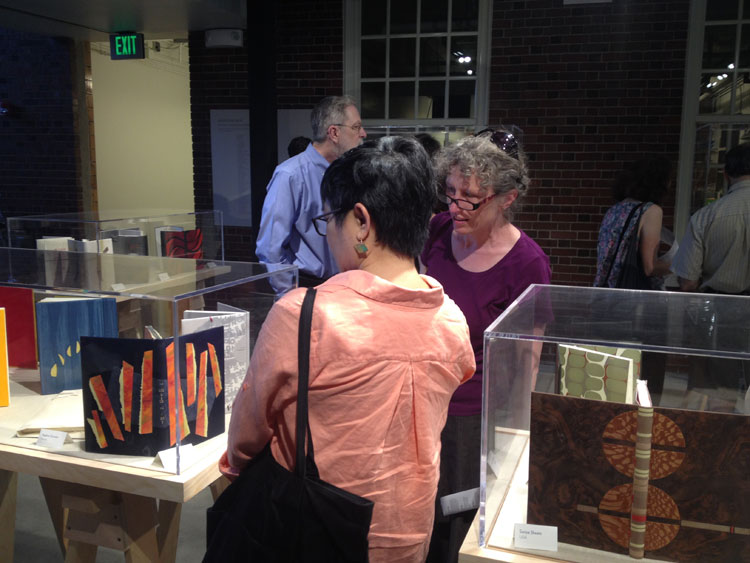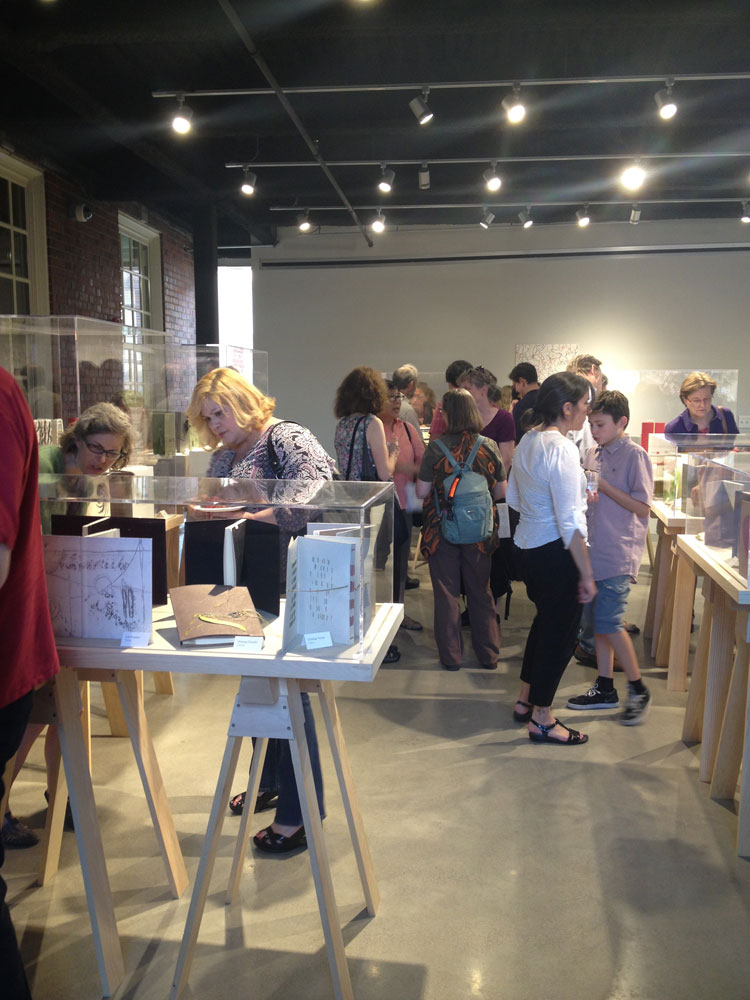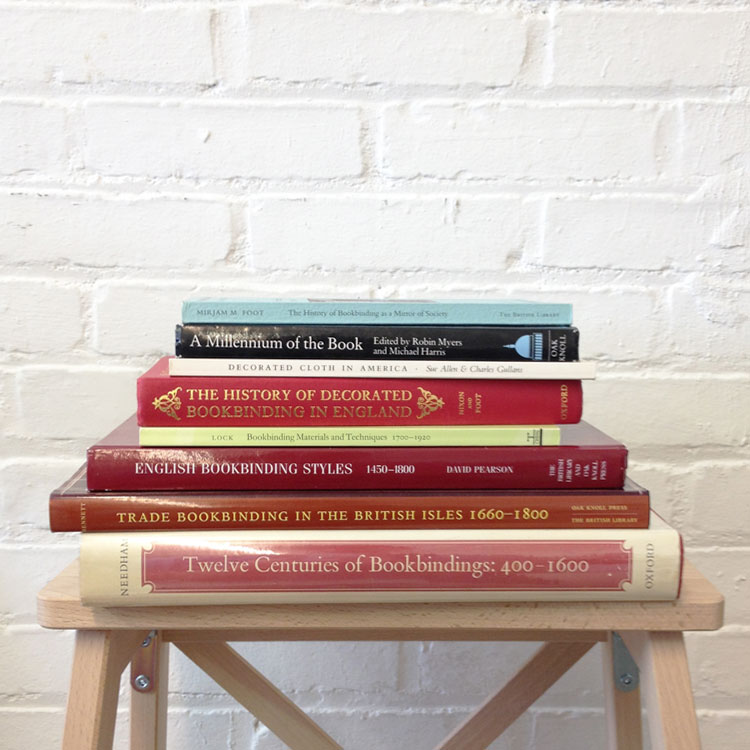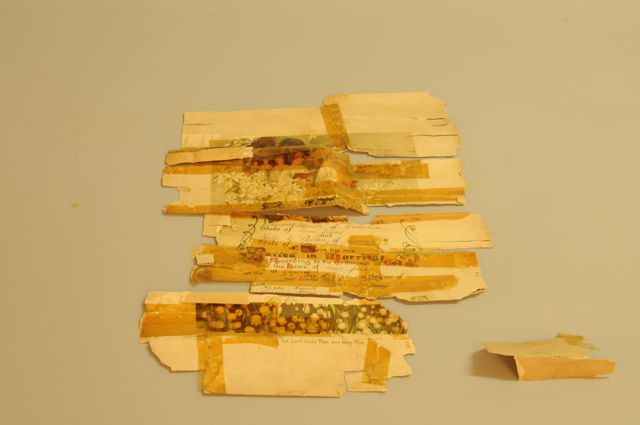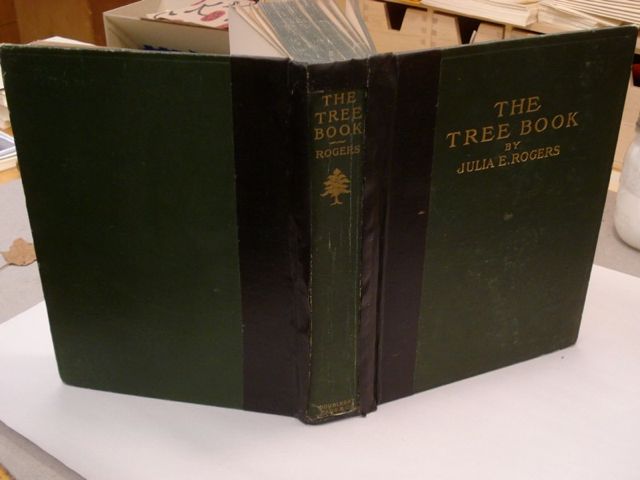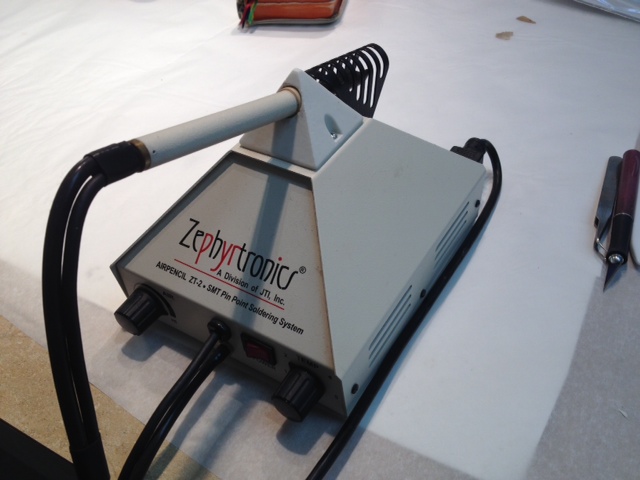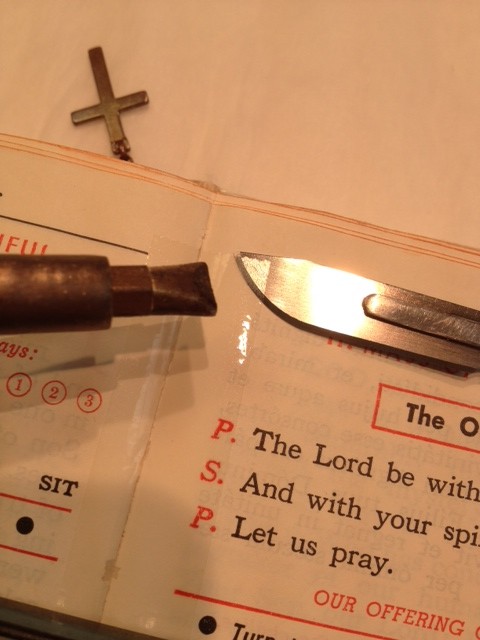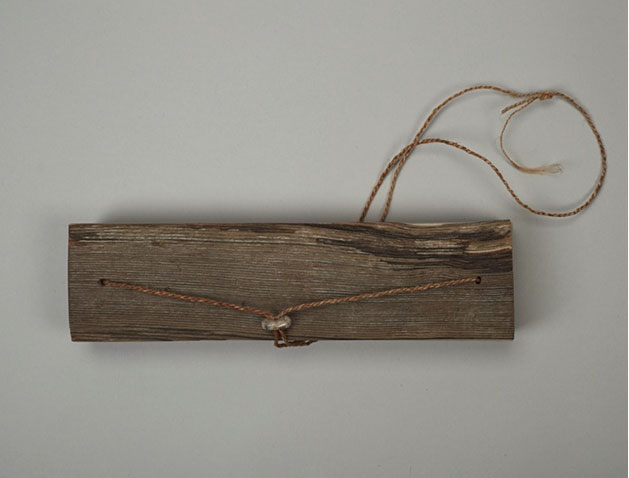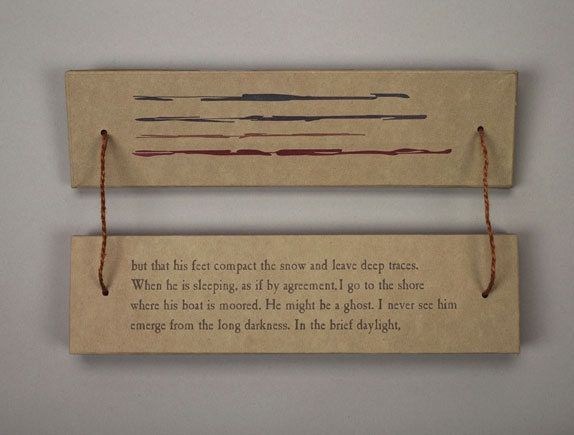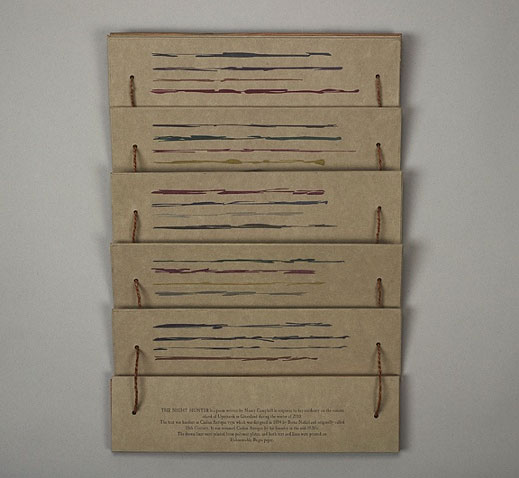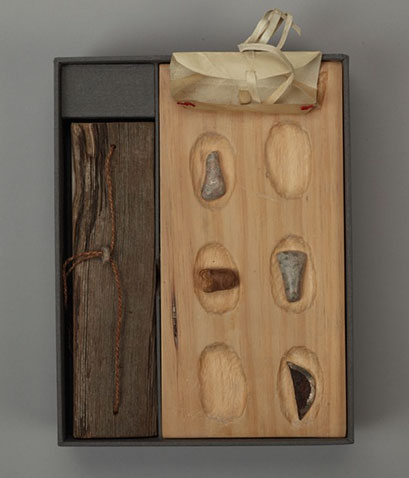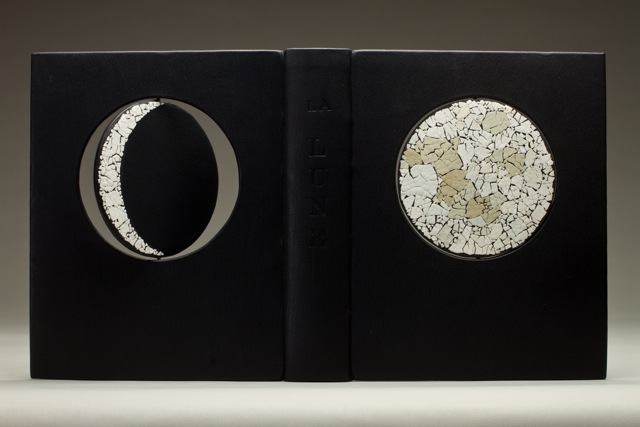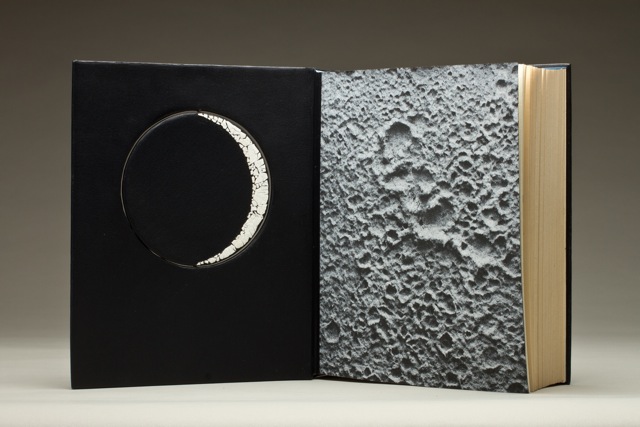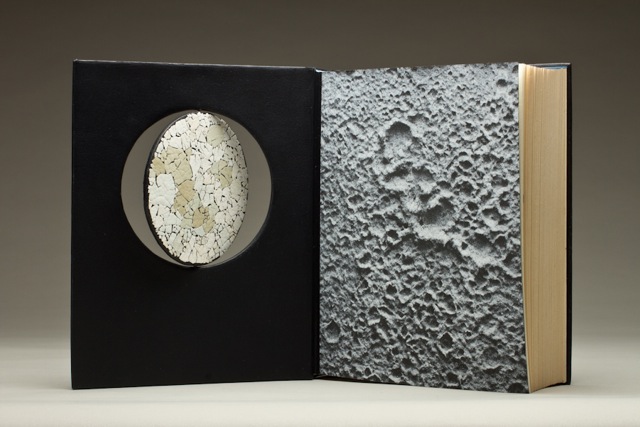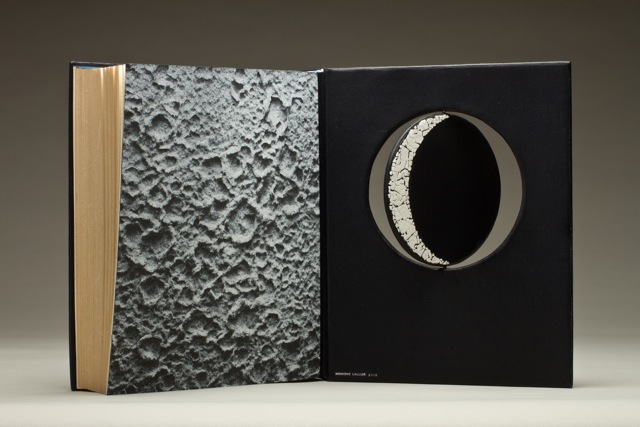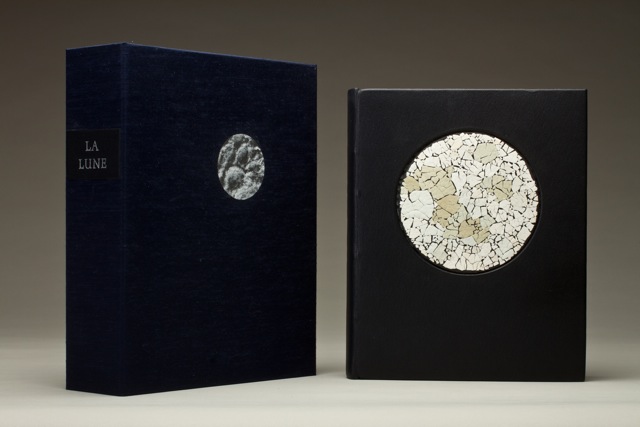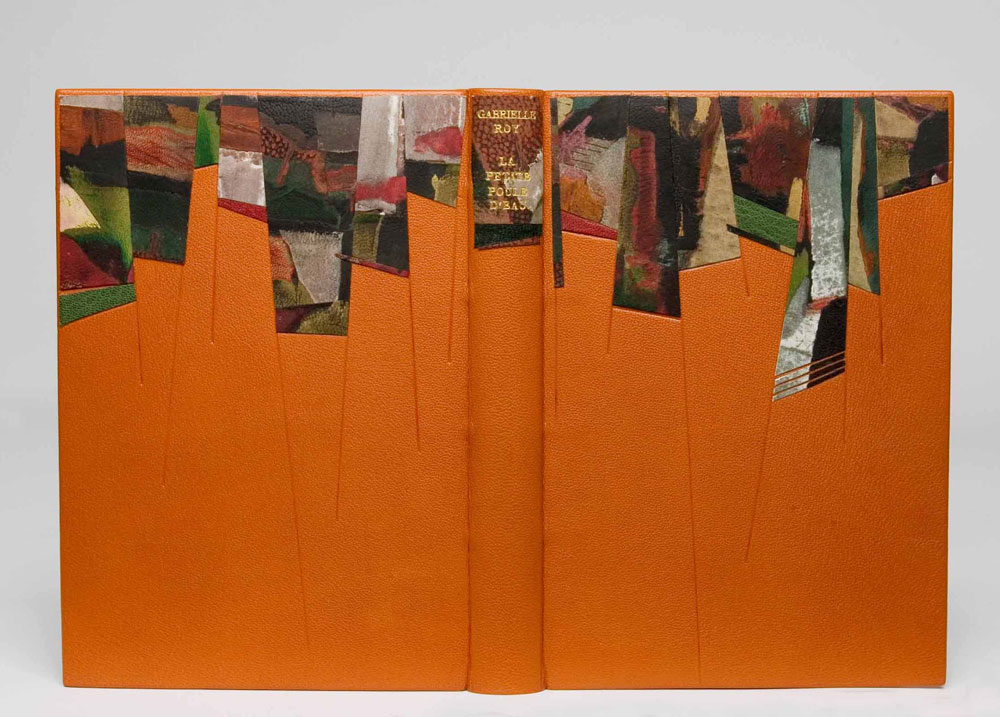For the past few months, I’ve been creating a collection of boxes for an aspiring book collector client of mine. Each box is similar in its format and design, only the colors change; a clamshell box with a rounded leather spine with false raised bands. The author and date of the imprint are hand tooled in gold on the spine with the title stamped in gold foil on a leather label recessed on the front board. The trays are covered in Canapetta bookcloth and lined with Bugra paper.
Five boxes into this ongoing project, my client presented his five volume set of The Christmas Books by Charles Dickens, asking for a box to hold all five that could also mimic the other clamshell boxes I had already made. I remembered a tutorial of Hedi Kyle’s that I had printed out some time ago on a multi-section slipcase, which she presented in 2005 at the GBW Standards held in Portland, Oregon. So I set out to create a model to present to my client.
The model was constructed using 20 pt. museum board and some scrap bookcloth. For the client’s box, I had to devise a way to cover the 20 pt. using Canapetta bookcloth and Bugra. Since a full sheet of 20 pt. laminated with bookcloth would get too bulky in the fold, the walls were assembled with four separate panels leaving a slight gap creating proper movement at the hinge.
My client also requested notches on the walls for easy removal of the books. Semi-circles were cut out along the edge of the panels and the cloth was cut into triangles to successfully turn-in around the curve.
Construction of this multi-section slipcase could be rather finicky at times, making it difficult to keep each component square. Once the slipcase sections were assembled and the interior ‘tongue and slot’ closure was added, it was time to construct an exterior case to mimic the clamshell boxes. I began by shaping the spine, which was rather difficult on a box that was wider than either of its other dimensions. The false bands were added and finally the leather was pasted down. The spine was then tooled and the leather label was laid into its well on the front board.
The slipcase block is mounted to the back board of the exterior case, which can freely swing away and aid in the movement of the slipcases.
